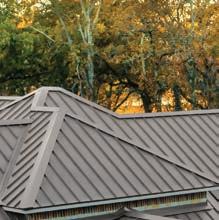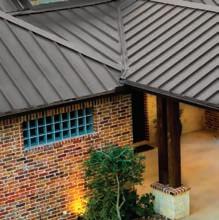A VILLAGE OF HOPE IN BANDERA

TEXAS RAISES
THE AMERICAN FLAG
A NEIGHBORHOOD’S SEED SAVER

A VILLAGE OF HOPE IN BANDERA

TEXAS RAISES
THE AMERICAN FLAG
A NEIGHBORHOOD’S SEED SAVER
Conservationists work to save native plants in decline



























Did you know that the average U.S. family’s wealth plunged nearly 40% during the Great Recession of 2007-2009? Meanwhile gold gained more than 75%.
Don’t be caught unprepared when an unexpected economic crisis hits. Learn how to protect and grow your savings by diversifying your assets with physical gold before it’s too late.
As the only precious metals firm guided by two former Directors of the U.S. Mint, U.S. Money Reserve makes diversifying with gold fast, easy, and secure.




gold ownership



Information on how gold can protect and grow your savings
Special introductory o ers you won’t find anywhere else
Two additional exclusive reports: “Global Gold Forecast” and “Protection in the Risk Zone”

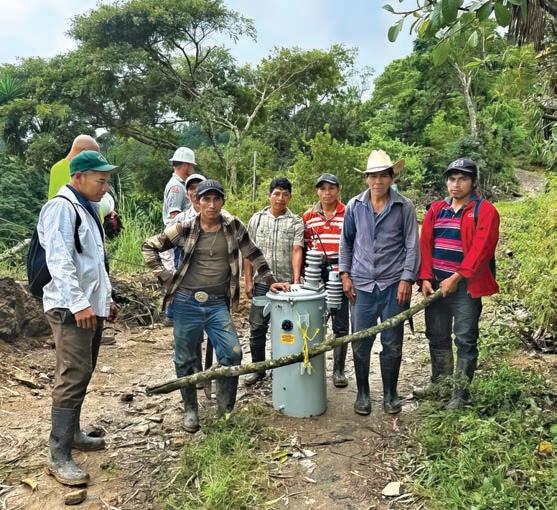
ON LINEWORKER Appreciation Day, April 8, we celebrate the 20 Texas electric cooperative lineworkers who brought electricity to Matasanos, a rural village in Guatemala. They spent two weeks there in November as part of NRECA International, a program that for more than 60 years has delivered electricity to remote places that had none—exactly what co-ops did in rural Texas 85 years ago.
Ten South Texas co-ops sent two crew members each, plus support staff. When they finished, 60 homes had each been wired with four lights, two switches and two outlets. Villagers helped the lineworkers move equipment up the mountain.
“I believe we take the American dream on the road and transplant it to other countries,” says Jim Coleman, general manager at Jackson Electric Cooperative in Edna, who has participated in several international projects. He was joined in Guatemala by GMs from four other Texas co-ops.

Some historians say April Fools’ Day customs have been around since the 16th century, when France’s King Charles IX decreed the new year would begin January 1 —not on Easter. Those who clung to the old ways were called April fools.
Tell us how you would finish that sentence. Email your short responses to letters@TexasCoopPower.com or comment on our Facebook post. Include your co-op and town. Here are some of the responses to our February prompt: Campfires remind me of …
Telling scary stories as kids.
CATHY ONDREJ
HILCO EC AQUILLA
Me and my dad camping. We would stare at the fire for hours and say, “This is much better than watching TV.”
MIKE EARLY VIA FACEBOOK
The time I set our tent on fire!
HOOMALIMALI PAULO VIA FACEBOOK
The possibility of a nostalgic gathering and the surety of an asthma attack.
SHELLY REID SOUTH PLAINS EC BECTON
Fresh air, boiled cowboy coffee, staring at the embers.
DURENA KRILEY VIA FACEBOOK
Visit our website to see more responses.
ENTER CONTESTS AT TEXASCOOPPOWER.COM
$500 RECIPE CONTEST
Football Favorites
FOCUS ON TEXAS PHOTOS
Textures
RECOMMENDED READING
Ten years ago we looked at the problems caused by the growing population of feral hogs in Texas. See Here a Pig, There a Pig from April 2014 on our website.


Pieces of Art
We became a fan of Puzzles of Color after meeting them at the Texas State Fair and absolutely loved the artwork of the woman playing bass [Puzzling Times, February 2024]. I made a custom frame for it, and it hangs in our guest bedroom.
Peter Hill
Pedernales EC
Austin
We don’t always have a resident gator at Magnolia Beach, but most times there’s one or two [Later, Gators?, February 2024].
My son and I were fishing when two teens were swimming nearby. I casually asked if they were watching for gators. “What gators?” came back sarcastically.
“The one with his nostrils and eyes sticking up under the walking bridge behind you,” I replied.
I swear they walked on water getting to the bank.
Jim Evans
Victoria EC
Port Lavaca

Yes, Jim Bowie’s knife was quite a sensation, and I’m glad you cast some doubt as to his actions at the Alamo, but it might be worth mentioning a bit more of his biography [A Cut Above, February 2024].
He was a slave owner, slave trader, smuggler and an associate of pirates. He also was a land speculator with a suspicious reputation.
Pedernales EC
Austin
Shamrock Memories
Glenn McCarthy’s two daughters were at Lamar High School when I was [The Green Carpet, January 2024]. The Cork Club was opened on Sunday afternoons for teens to come, dance to a small orchestra and have nonalcoholic drinks.
In 1952, my date and I went with another couple. The featured singer for the week came to entertain us—Tony Bennett. Hearing I Left My Heart in San Francisco always reminds me of that very special afternoon.
Betty Akin Morris
Pedernales EC
Canyon Lake
TEXAS ELECTRIC COOPERATIVES
BOARD OF DIRECTORS
Chair Neil Hesse, Muenster
Vice Chair Avan Irani, Robstown
Secretary-Treasurer Bryan Wood, San Augustine Board Members Dale Ancell, Lubbock
Mark McClain, Roby • Julie Parsley, Johnson
City • Brandon Young, McGregor
PRESIDENT/CEO Mike Williams, Austin
COMMUNICATIONS & MEMBER
SERVICES COMMITTEE
Mike Ables, Bellville • Matt Bentke, Bastrop
Marty Haught, Burleson • Gary Miller, Bryan Zac Perkins, Hooker, Oklahoma
John Ed Shinpaugh, Bonham
Rob Walker, Gilmer • Buff Whitten, Eldorado
MAGAZINE STAFF
Vice President, Communications & Member Services Martin Bevins
Editor Chris Burrows
Associate Editor Tom Widlowski
Production Manager Karen Nejtek
Creative Manager Andy Doughty
Advertising Manager Elaine Sproull
Communications Specialist Samantha Bryant
Digital Media Specialist Caytlyn Calhoun
Assistant Production Manager Alex Dal Santo
Print Production Specialist Grace Fultz
Food Editor Vianney Rodriguez
Senior Designer Jane Sharpe
Communications Specialist Claire Stevens
Proofreader Louie Bond
TEXAS CO-OP POWER Volume 80, Number 10 (USPS 540-560). Texas Co-op Power is published monthly by Texas Electric Cooperatives. Periodical postage paid at Austin, TX, and at additional offices. TEC is the statewide association representing 76 electric cooperatives. Texas Co-op Power’s website is TexasCoopPower.com. Call (512) 4540311 or email editor@TexasCoopPower.com.
SUBSCRIPTIONS Subscription price is $4.44 per year for individual members of subscribing cooperatives and is paid from equity accruing to the member. If you are not a member of a subscribing cooperative, you can purchase an annual subscription at the nonmember rate of $7.50. Co-op members: Please notify your co-op of address changes or other subscription requests.
POSTMASTER Send address changes to Texas Co-op Power (USPS

Scientists, landowners and plant lovers work to preserve hundreds of threatened Texas natives
Randy Deming often walks his 10 acres of rural land in Callahan County, near Abilene, always on the lookout for a flower, insect or bird he hasn’t spotted before.
Using an app called iNaturalist, he documents the native grasses, yuccas, Ashe junipers, live oaks and other plants that grow there. Thanks to the app, Deming learned in 2021 that one of his flowering species could be one of only a few remaining populations in Texas.
“I took pictures of a pretty flower and forgot about it,” recalls Deming, a member of the Texas Master Naturalist Program and Taylor Electric Cooperative. “A few months later, I was skeptical when someone contacted me through iNaturalist and asked to see my large-flower beardtongues.

“When they told me how rare they are, I was excited,” Deming says. “I could have mowed them down! Now I’m watching over them.”
In the future, large-flower beardtongues—a tall, erect perennial with tubular purple blooms—could be legally protected if researchers collect enough ecological data to substantiate the designation. In the meantime, 437 other Texas plants have already been designated by the state as “species of greatest conservation need,” meaning they’re in decline and need attention. Some of those species require even more urgent measures. These are further labeled as threatened or endangered.
The two legal terms stem from the Endangered Species Act, a federal law enacted in 1973 to protect and help recover the nation’s imperiled plant and animal species and their habitats. The U.S. Fish and Wildlife Service oversees the federal list and partners with the Texas Parks and Wildlife Department, which manages the Texas list. A species can be federally and state protected, such as shrubby Texas snowbells in the Hill Country, or just one or the other.
However, the process for federally listing a species can stretch out for years. Consider the bracted twistflower, a tall annual with lavender flowers that has been increasingly lost to urban sprawl and hungry herbivores. Found only within the Edwards Plateau, the wildflower has been marked as imperiled since 1975 and was petitioned for TEXAS
federal listing in 2014. In May 2023—nine years later—the USFWS finally listed the bracted twistflower as threatened. In Coryell County, the imperiled Texabama croton faces similar challenges.
Plants of all kinds in Texas face many pressures. Every year, development scrapes away one natural area after another. Invasive plants, agriculture, poaching, mining, weather, loss of pollinators, and land and water management also negatively impact the state’s flora.
But does it really matter if a few of Texas’ estimated 5,000-plus native plant species go away? The answer is yes.
“We have biodiversity for a reason,” says Anna Strong, a rare species botanist with TPWD. “Each organism interacts with others in specific ways. Regardless of whether it’s rare or common, if we take out one organism, we don’t know the implications amongst all the organisms. If we take out one flower, we may take a food source away from a specific insect that relies on that species.”
At the San Antonio Botanical Garden, botanist Michael Eason works to conserve and propagate rare Texas plants. “We have more than 90 species in our collections,” Eason says. “Some are displayed in our gardens, which helps to educate the public. Others are seed collections, which haven’t been propagated yet.”
One of those species, prostrate milkweed, a low-growing perennial, is endemic only to Starr and Zapata counties and northeastern Mexico. Since at least 1980, invasive

An endangered species is defined under the Endangered Species Act as “any species which is in danger of extinction throughout all or a significant portion of its range.”
A threatened species is defined under the ESA as “any species which is likely to become an endangered species within the foreseeable future throughout all or a significant portion of its range.”
Imperiled is not a legal term. Biologically, it refers to unprotected species that are in decline and may be in danger of extinction.
Rare plants have very limited ranges or exist in low numbers.
buffelgrass, road construction and development have drastically reduced its numbers. After several petitions to the USFWS, prostrate milkweed—an important monarch butterfly host plant—was federally listed as endangered in March 2023. The agency also designated 661 acres as critical habitat needed by the species to survive.
For his part, Eason spent five years tracking down the scarce milkweeds and collecting seeds, then having a milkweed specialist grow the plants to maturity. “We ended up with 150 plants,” he says. “We passed some to other botanical gardens. We’ll install some in our rare plant gardens. The remainder will be kept for perhaps reintroductions in South Texas and donations to other institutions with the Center for Plant Conservation.”
Headquartered in Escondido, California, the CPC is a

nationwide network of organizations working together to save imperiled native plants. The San Antonio Botanical Garden partners with the CPC, as do the Botanical Research Institute of Texas at the Fort Worth Botanic Garden, Mercer Botanic Gardens in Humble and the Lady Bird Johnson Wildflower Center in Austin.
As part of its conservation efforts, the wildflower center stores seeds of 575 Texas plant species for research and sharing with botanical gardens and conservation organizations. The seed bank, housed mostly in freezers, also serves as an insurance policy against the loss of imperiled species.
“We visit wild populations that we have permission to access, either on public land or through contacting landowners,” explains Jonathan Flickinger, conservation collections manager at the wildflower center. “We harvest seeds
The Texas Department of Transportation monitors for rare plants prior to road construction and along state highways and rights of way. Edd Paradise, a TxDOT environmental planner in Pharr and a Magic Valley Electric Cooperative member, worked with USFWS to relocate endangered Zapata bladderpods in Starr County.
Aaron Lincoln—a biodiversity manager with Lhoist, a global corporation—oversees a pilot project to restore grasslands and a pocket prairie at a 3,000acre chemical lime plant and quarry in Bosque County. So far, he’s documented glandular blazing stars, Hall’s prairie clover, lemonscent and other declining species. Lincoln also hopes to set aside 122 acres as a refuge for white troutlilies and morel mushrooms.
The Friends of the Warren Ferris Cemetery in Dallas rallied to transform the historic cemetery’s neglected grounds into native habitat. Today, the Constellation of Living Memorials pilot project includes eight old cemeteries and will serve as an example for revitalizing the state’s 5,000-plus historic cemeteries. One project goal is to encourage the recovery of threatened and endangered plant species.


from plants, but we don’t take too many because our priority is to conserve the plants in their natural habitat.”
In some cases, researchers may rescue plants by digging them up. That happened with the Texas poppy-mallow, listed as federally endangered in 1981. The tall perennial with reddish purple flowers grows in deep sandy soils along the Colorado River in four counties.
In 2010, some conservation-minded landowners asked that a population of poppy-mallows be removed from a future construction site on their property. That summer, wildflower center staff and other colleagues extracted 54 plants and fostered them in pots for three years.
“We harvested more than 3,000 seeds from them for our seed bank,” Flickinger says. “Then we identified another site where they were reintroduced.”
Landowners play a huge role in plant conservation, namely because about 95% of Texas’ land is privately owned. When threatened or endangered plants grow on private land, landowners are not legally required to manage them under the Endangered Species Act (the law differs for listed birds and animals).
Botanists and other officials must always ask permission before accessing private land. Typically, they want to survey plant species, perhaps harvest a small amount of seeds and collect plant material for herbarium vouchers.
The Fish and Wildlife Service offers a program that provides property owners with free technical and financial assistance for improving wildlife habitat on their land. “We’re always looking for opportunities to work with landowners,” says Chris Best, USFWS botanist. “Most of the ones I’ve met want to protect their land’s natural resources.”
That aptly describes attorney Liz Rogers, a Medina Electric Cooperative member. For more than two decades, she’s welcomed researchers onto her family’s 8,000-acre cattle ranch in southeastern Brewster County, along the Mexico border. “They always show me cool things, which has made me appreciate our ranch even more,” she says.
Eason has been among many plant conservationists who have botanized the ranch’s Trans-Pecos deserts, canyons and mountainsides. “Liz has an assortment of rare plants found along cliff faces and other protected areas,” he says. “We’ve collected plants such as Turner’s cliff thistle, rockdaisy and Barton’s dalea. She also has a small population of night-blooming cereus.”
Whether rare or not, showy or inconspicuous, every native plant matters. “We shouldn’t focus conservation merely on species that have declined so far that they’re teetering on the brink of extinction,” Best says. “We should be working to keep common plants common.” D

Just as the Lady Bird Johnson Wildflower Center in Austin stores seeds of 575 Texas plant species for research, national and global seed vaults do the same—preserving plant types in case they are wiped out by natural or human-made disasters.
The National Laboratory for Genetic Resources Preservation on the campus of Colorado State University is run by the U.S. Department of Agriculture. It houses more than 850,000 plant seeds and materials, as well as DNA samples from about 160 breeds of livestock.
The Svalbard Global Seed Vault, located about halfway between the North Pole and the coast of Norway, is more than 300 feet inside a mountain, where the permafrost maintains a stable temperature between 26 and 39 degrees. Three large concrete chambers have the capacity to hold 3.5 million seed samples.


BANDERA’S HELPING HAND PUTS RELIEF WITHIN REACH FOR NEIGHBORS IN NEED
 LAURA JENKINS
LAURA JENKINS
FROM THE ROAD, it doesn’t stand out from any other small office complex you might find in the Hill Country. But once you pass through the towering iron gate, get out of your car and start walking, the landscape becomes much more inviting: winding paths that lead to a peaceful courtyard and a sprawling pergola nestled against a scenic lily pond.
This is what hope looks like. More specifically, the Village of Hope—the cluster of buildings owned by Bandera County Helping Hand, a haven for residents facing a personal crisis. Are you sick? There’s a free medical clinic. Is your cupboard bare? Head over to the food pantry. Do you need shoes, clothes or basic household items? The thrift store has what you need.
Since 1984, Bandera Helping Hand has been a steadfast safety net for folks who have hit hard times.
“We’re here to help people get on their feet,” says Jesse Parks, executive director of Helping Hand. “You never know what tomorrow will bring. Everything’s great until all of a sudden there’s a car wreck and somebody’s gone or there’s a flood or a fire and you’ve lost everything. It’s devastating.”
Parks speaks from experience. In the late 1990s, she and her husband uprooted their lives in Corpus Christi and moved to Medina, just west of Bandera, where they signed a long-term lease on a piece of land and started working on their dream: building a facility for teens experiencing crisis. Two years later, without warning, the landowner sold it out from under them, including the structures and improvements they’d funded with their own money.
They lost everything. To make ends meet, Parks got a job at the Apple Store in Medina (which actually sells fruit). One day a friend came in and told her that she’d recommended Parks for the director position at Helping Hand. Even though she’d never worked at a nonprofit, Parks accepted the position and has led the organization since 2000.
Helping Hand began 16 years earlier, in 1984, when local churches came together to assist neighbors in need. The aim was to pool resources and provide a central place where people could go for help. In the early days, Helping Hand operated a thrift store and a food pantry and provided school supplies for children. It also helped struggling residents pay their utility bills.
But when the Medina River swept through the town during the devastating South Texas floods of 2002, it demolished Helping Hand’s facilities. Quite suddenly they were among those in crisis.
“Our building was completely destroyed,” Parks remembers, “so we set up shop in a warehouse and started gathering donations from other food banks. The Salvation Army came in and helped us provide aid for flood victims as well.”
Seeing how generously and efficiently Helping Hand had been serving the community, Bandera’s city council offered them space so they could continue helping residents while they figured out how to start over themselves. And that’s when offers of help started pouring in.
“A retired grant writer by the name of Dan Wise got in touch and offered to help us raise funds to rebuild,” says Parks, a member of Bandera Electric Cooperative. “I looked forever for land that was not in a flood plain and finally found this 3.77 acres. We bought it with money we borrowed from Bandera Bank but were able to pay it back within a year using the grants that Mr. Wise helped us get from various foundations.”
By early 2004, Helping Hand’s crisis intervention center was complete. At the building’s dedication, then-board President Comellia Rue announced that the next structure they would build was a free medical clinic to serve the county’s uninsured residents. But no one had any idea where the money would come from.
Enter Kerrville businessman Arthur Nagel, who approached the pastor of a local church and told him God had given him a vision to start a medical clinic in Bandera. The pastor introduced Parks to Nagel, who donated $150,000 to construct the shell of the clinic building on the Village of Hope grounds. Within a year, Helping Hand had raised enough money to complete the clinic and operate it for a year. The clinic formed its own nonprofit and opened its door to patients in 2008.
Today the Arthur Nagel Community Clinic is open three days a week. In addition to primary care, the clinic offers mental health services and teen and elder care programs. Healthy cooking and cardio fitness classes are also available. The clinic provided an estimated $1.9 million in health services to 443 Bandera County residents in 2023, says clinic director Chuck Lutke.
The food pantry stays stocked thanks to food and cash donations from individuals and contributions from other food banks. As a result, Helping Hand can feed an average of 130 families a month.
At the thrift store, which thrives on steady donations of gently used clothing and household items, residents purchase what they need at affordable prices. Sales cover nearly three-fourths of Helping Hand’s annual operating budget.
“Helping Hand is about community,” Parks says. “We all work as a team. I see us as a community of ‘hands’ that resources pass through. Each one of us has been through hard times and knows what a little compassion and love can mean in a crisis situation.
“Helping people get back on their feet and feeling good about themselves as they overcome whatever they’re going through is a privilege.
“It’s not a handout, it’s a hand up.” D



















The heritage of American Silver Dollars is rich and diverse, marked by stunningly beautiful designs, leading to an enduring desirability in the hearts of collectors around the world. In this iconic U.S. Silver Dollar set, spanning nearly 150 years, you’re getting FIVE American Silver Dollars issued over the last 15 decades that each reflect the history, culture and economic aspects of the United States.
We’ve Done the Work for You with this Extraordinary 5-Pc.
Each of these U.S. Silver Dollars is sought-after by collectors individually, but this set includes every design of U.S. Silver Dollar in American history, issued from 1878 to 2024!
Morgan Silver Dollar: First struck 146 years ago in 1878, the Morgan has a historic legacy as the coin that helped build the American West. Minted until 1904, then again in 1921, this 90% silver coin with its iconic Lady Liberty design is the most collected vintage Silver Dollar in the world. Extremely Fine (XF) condition coin included in set.
Peace Silver Dollar: With a beautiful design memorializing peace following the end of World War I, the 90% silver Peace Dollar was intended as a one-year only release struck in 1921—but it proved so popular with the American people, it was struck until 1928, then again in 1934-35. Extremely Fine (XF) condition coin included in set.




Eisenhower Dollar: The last circulating U.S. dollar coin, the Eisenhower Dollar, aka the “Ike Dollar,” was prized by Americans, with its design featuring war hero President Dwight D. Eisenhower, backed by an image symbolizing the Apollo II moon landing. First struck with silver 1971-1976, the Eisenhower Dollar in this set was struck in 40% silver for collectors, and you will receive a coin in Brilliant Uncirculated (BU) condition.























Silver Eagle Type 1: The first-ever U.S. Silver Dollar minted in 99.9% silver, these coins were first minted in 1986 following President Ronald Reagan’s signing of the Liberty Coin Act into law on July 9, 1985, which authorized the U.S. Mint to strike America’s new silver bullion coin. This gorgeous Silver Dollar features the original, revered Type 1 “Heraldic Eagle” reverse design by John Mercanti, 12th Chief Engraver of the U.S. Mint. Brilliant Uncirculated (BU) condition coin included in set. Silver Eagle Type 2: In honor of the popular 99.9% silver coin’s 35th anniversary in 2021, the Silver Eagle received a new, esteemed Type 2 “Eagle Landing” reverse design. This is the current issued coin by the U.S. Mint. Brilliant Uncirculated (BU) condition coin included in set.
SAVE with this Ultimate U.S. Silver Dollar Set!
You’ll save both time and money on this 150 Year U.S. Silver Dollar Set, with FREE SHIPPING and a BONUS presentation case, plus a new and informative 150 Years U.S. Silver Dollars booklet! Call right now










 MESSAGE
FROM CEO
WILLIAM “BILL” HETHERINGTON
MESSAGE
FROM CEO
WILLIAM “BILL” HETHERINGTON
THIS YEAR, APRIL 18 is Lineman Appreciation Day, so I want to draw attention to our first responders of electricity restoration. We live in a world where the continuous supply of reliable and affordable electricity is the expectation. Electricity is critical to keeping us warm when it is cold and keeping us cool when it is hot. Due to the criticality of this supply, if something disrupts its delivery, it is an emergency and the people responding to this emergency are our linemen.
There are many people involved in the process of power restoration, from the engineers who designed the grid to minimize disruption, to our member service representatives who answer the calls, but the linemen are the ones identifying the issues in the field and making the necessary repairs.
The restoration of electricity can be a very complex process depending on the nature of the trouble. Our linemen spend years undergoing specialized training to become certified. They have the knowledge, tools, and ability to troubleshoot why the power went out and the best way to safely restore it.
So, in appreciation of our linemen, I have paraphrased a poem that was originally published in The Exciter in January 1948, which highlights their importance.
Upon the storm swept crossarm
Where the winds blow wild and free
A cowhide belt and a chip of steel
Twixt him and injury
When the thunder peals o’er the treetops
And the lightning gleams on the hills
It’s then the work that’s awaiting him
Will give him plenty of thrills.
When folks in houses cringe and shake
Before the storm has passed He handles danger at his fingertips
To make the hot wires fast.
One slip of the hand means injury
But a calm and deliberate mind
Keeps him safe and sure as sin
He’s on to the next one and back up the pole again.
So the next time bad weather arrives
When everything goes black
Just think of the linemen working hard
To get those hot wires back.
We are very proud that year in and year out BEC’s electric system reliability is ranked near the top in Texas. We are also very proud of the men and women whose work it is to keep the lights on. As long as we continue to deliver power with poles and wires, we will need line workers. We strive to keep the lights and power on 24/7, but if the power does go out, know that our linemen are on the way. D

THE EXCITEMENT IS PALPABLE AS as Bandera Electric Cooperative proudly announces the winners of the highly coveted Youth Tour for 2024. These outstanding students have been selected to embark on an unforgettable journey to Washington, D.C., courtesy of BEC’s sponsorship.Emerson Carter, Comfort High School; Kassidy Jernigan, Utopia High School, Taylor Hill, Leakey Independent School District; and Zoe Zubyk, Prospect Hill Homeschool, were the four students chosen to attend this year’s Youth Tour.
We’re thrilled to introduce the fantastic four who will represent our community on this educational adventure: Kassidy Jernigan from Utopia High School, Zoe Zubky from Prospect Hill Homeschool, Taylor Hill from Leakey High School, and Emerson Carter from Comfort High School. Each of these bright individuals embodies the spirit of curiosity and enthusiasm that the Youth Tour is all about.
The Government-in-Action Youth Tour, a cherished tradition among Texas electric cooperatives, offers students a unique opportunity to explore our nation’s capital, delve into its rich history, and engage with the leaders of tomorrow.
From touring historic landmarks to meeting congressional representatives, this trip promises to be an experience of a lifetime.

“We couldn’t be prouder to support these exceptional young leaders,” said Bill Hetherington, CEO at BEC. “Their passion for learning and their communities exemplify the values we hold dear at BEC.”
The Youth Tour, scheduled for June 16 to June 25, will take these students on a nine-day journey filled with exploration, learning, and friendship. It’s a chance for them to gain invaluable insights into the energy industry, foster cultural understanding, and forge lifelong connections with peers from across the nation.
Since its inception in 1965, the Youth Tour has been a cornerstone of Texas electric cooperatives’ commitment to youth education and leadership development. Over 4,400 Texas youths have had the privilege of participating in this transformative experience, thanks to the support of organizations like Bandera Electric Cooperative.
As then-Senator Lyndon B. Johnson once remarked, “sending youngsters to the national capital where they can actually see what the flag stands for and represents” is a powerful way to inspire future leaders. BEC is proud to play a part in this tradition.
Congratulations once again to Kassidy, Zoe, Taylor, and Emerson on this well-deserved honor. We can’t wait to see the incredible impact you’ll make on the Youth Tour and beyond! D

IT CAN BE OVERWHELMING and confusing trying to understand who provides the best internet service for your needs. Considering how important reliable internet is in our lives today, it’s not a decision to take lightly. Make sure you understand whether your internet is 100% Fiber, what each service tier means, and of course, value for your money.
BEC Fiber is 100% fiber to every home. With Fiber to the home, you’ll have equally fast upload and download speeds, no shared bandwidth, and no outdated cabling in your network. Fiber internet uses fiber optic cables and lasers to transmit data at rapid speeds by using light pulses. That means your internet is moving at the speed of light! Fiber gives you the flexibility to use all your smart devices simultaneously and still have bandwidth to spare. The adaptability of fiber allows us to increase speeds as technology requirements increase without having to change our infrastructure.
Other internet providers use outdated technology like radio towers, coaxial cable, and copper, which are more susceptible to interference, can be affected by inclement weather, and simply can’t handle the traffic load of today’s technology. Some “Fiber” providers are fiber to the node, meaning that fiber is run to a point but is then converted to coaxial cable or another transport medium. You will know when a provider only offers partial fiber if the speeds are listed as fraction.
For example, 500/250. That means you can download at one speed, and upload at another, slower speed.
Mbps, Gbps, and Gigs, oh my! Service Tiers Explained Service tiers can be difficult to understand. Broadband speeds are measured by Megabits Per Second (Mbps) and Gigabits Per Second (Gbps). Gbps, Gbit/s, Gb/s, Gig, and GIG all mean the same thing! 1000 Mbps = 1 Gbps (Just like if you said 12 inches instead of 1 foot). BEC’s most popular choice is 1 GIG because you can work, stream, and game from multiple devices without slowing down. 1 GIG still not fast enough? BEC Fiber also offers a 2 GIG package!
Prices vary for internet service depending on speed and the kind of company. For instance, it’s common practice for national chains to enter small towns, offer a promotional low price, then raise your rates a few months after you’ve signed the dotted line. BEC recently revamped our service tiers and prices to reflect our current market. While other providers are offering 1 GIG of partial fiber for $89.95, we offer 1 GIG of 100% fiber for only $79.99 with no contracts! Check your bill and current provider to make sure you’re not paying $119 more per year for a lesser service.
Ready to switch to BEC Fiber? Call 866-226-3372 or visit www.BECFiber.com. D



BANDERA ELECTRIC COOPERATIVE is proud to announce the launch of our new Smart Thermostat Program, aimed at empowering our members to take control of their energy usage. Through this initiative, we’re excited to offer our members the opportunity to enroll in the Energy Saver Program and receive a free ecobee3 lite smart thermostat, coupled with hassle-free installation by licensed professionals.
So, why should you consider upgrading to a smart thermostat? Smart thermostats offer many benefits, not just for your comfort but also for your wallet. Here’s how:
Smart thermostats are designed to learn your heating and cooling preferences over time and adjust automatically to optimize energy usage. By efficiently regulating your home’s temperature, they help reduce energy waste, leading to lower utility bills.
With smart thermostats, you can control your home’s temperature remotely using your smartphone or other internet-connected devices. This means you can adjust settings while away from home, ensuring comfort upon your return without unnecessary energy consumption.
One of the standout features of our Smart Thermostat Program is its ability to curb electricity usage during peak demand periods. By participating in demand response events, you not only contribute to grid stability but also help keep energy prices lower for everyone.
Enrolling in the Energy Saver Program today not only gives you a free ecobee3 lite smart thermostat, but also opens the door to earning monthly bill credits. Take control of your energy usage, save money, and contribute to a greener tomorrow by joining BEC’s Smart Thermostat Program today! D

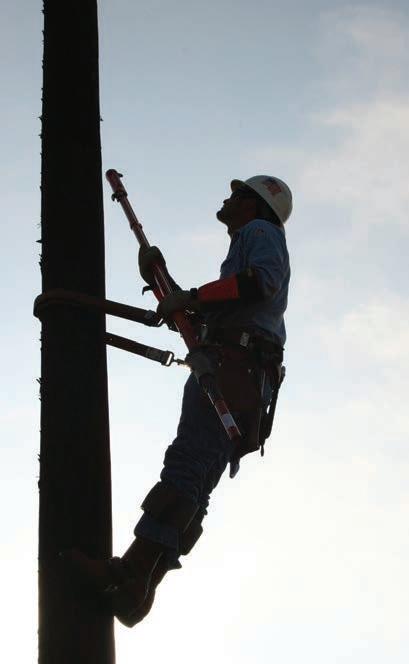


IN THE DEAD OF NIGHT, amidst raging storms or scorching heatwaves, a band of silent heroes emerges onto the scene, ready to restore light and hope to communities in need. These are the linemen of Bandera Electric Cooperative (BEC), an elite corps of around 40 dedicated individuals covering seven counties, whose unwavering commitment and selflessness power the heartbeat of our society.
Through the wind, rain, snow, ice, and extreme heat, the linemen of BEC answer the call of duty with unparalleled resilience. Theirs is a profession that demands courage, skill, and sacrifice, as they navigate treacherous conditions to keep the lights on for thousands of households.
Operating on a 24/7 basis, BEC’s linemen are always on standby, ready to spring into action at a moment’s notice. They leave the warmth and comfort of their homes, often in the darkest hours of the night, to embark on missions fraught with peril. Yet, with nerves of steel and a steadfast determination, they press forward, driven by a sense of duty and a deep-rooted commitment to their communities.
Behind every lineman stands a family, whose unwavering support and sacrifice are the unsung pillars of their bravery. While the linemen brave the elements, their loved ones wait anxiously, offering prayers and support from afar. It’s a testament to the strength of familial bonds and the shared understanding of a higher calling.
The linemen of BEC represent a diverse spectrum of experience, with some just starting off on their journey, while others have dedicated over 50 years of service to the cooperative. Regardless of tenure, each lineman embodies the same unwavering dedication and spirit of service, united in their mission to keep the lights on and communities connected.
April 18th marks Linemen’s Appreciation Day, a time to honor these unsung heroes and recognize their invaluable contributions to our society. But the linemen’s dedication extends far beyond their duty to restore power. They are integral members of the communities they serve, often going above and beyond to lend a helping hand. Whether it’s volunteering their time for educational initiatives or participating in community outreach programs, these linemen are more than just utility workers — they are beacons of hope and pillars of strength.
As we go about our daily lives, it’s easy to take for granted the simple luxuries afforded by electricity. But behind every flickering light and humming appliance lies the tireless efforts of the linemen, who work tirelessly to keep our world powered and connected.
So the next time you see a lineman braving the elements, spare a moment to offer a word of thanks and appreciation. For they are the unsung heroes of our modern age, whose dedication and sacrifice illuminate the path forward, guiding us through even the darkest of nights.D
TO CELEBRATE LINEMEN APPRECIATION DAY, BEC invited local kids in 12th grade and under, to participate in an exclusive drawing contest honoring the hardworking linemen of their electric cooperative. The instructions called for a hand-drawn and colored masterpiece showcasing the dedicated and hardworking BEC linemen, and the participants did not disappoint.
All drawing submissions were posted to BEC’s Facebook, where members were encouraged to vote for their favorite. The drawing with the most likes would be declared the contest winner. Each artwork submission was flooded with praise and positive comments from members equally as appreciative for the linemen who put their lives on the line to ensure the lights stay on.
Although the competition was stiff, only one drawing could take the prize. Slayton Hall, a 6th-grader at Bandera Middle School, won the contest with his creative and captivating picture! While Slayton’s drawing might have taken home the trophy, BEC would like to recognize the talent bestowed in all of the artwork submissions shown below.
National Linemen Appreciation Day may only occur once a year, but at BEC, the appreciation for our linemen is something worth celebrating all the time. D

CONTEST WINNER: SLAYTON, 6TH GRADE


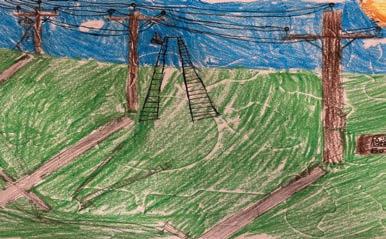




Linemen Appreciation Day
Thursday, April 18
National Clean Out Your Medicine Cabinet Day
Friday, April 19
San Jacinto Day
Sunday, April 21
Earth Day
Monday, April 22
BEC Foundation Family Movie Night
Saturday, May 4


We love our trees, but when branches are too close to power lines, they can cause power outages, fire hazards and other safety concerns.
Here are some rules to follow:
If a tree or a large branch is touching—or falls on—an electric line, call your electric cooperative immediately.
Never trim trees that grow close to power lines; that is a job for professionals. Call your electric cooperative for assistance and guidance.
Use extreme caution when doing any overhead trimming. Branches often fall in unexpected places.
Don’t allow children to climb trees or build treehouses close to power lines.
Plant appropriate distances from all power lines.
When planting a tree, consider how tall the tree will grow. At maturity, trees should be at least 10 feet away from power lines.
BEC encourages you to always practice safety.
CONTACT US
P.O. Box 667 • Bandera, TX 78003
Toll-Free 1-866-226-3372 (1-866-BANDERA)
Web banderaelectric.com
Email mas@banderaelectric.com
Board of Directors
District 1 Robert Aguirre
District 2 Frances “Fran” Laue
District 3 Jeffery “Jeff” Slocum
District 4 Jeremy Diller, Vice Chairman
District 5 Annegreth “Anna” Niemann
District 6 Richard “Dick” Earnest
District 7 Christopher “Chris” Blakemore
District 8 Michael D.T. Edwards, Chairman
District 9 Kurt Solis, Secretary-Treasurer
Key Staff
William “Bill” Hetherington, CEO
Lynn Midgette, Interim CFO
John Padalino, General Counsel and CAO
Shane Schmidt, COO
Mission Statement
Our mission is lighting the grid to empower our members.
Vision Statement
Reimagining rural America.







































‘Many a manly cheek was wet with tears’ when the Texian flag was lowered for the last time
BY W.F. STRONGIN ABOUT A YEAR and a half—December 29, 2025—we’ll mark the 180th year of Texas statehood. That’s the day the proudest of Texans would say the U.S. was allowed to join Texas.
The vast majority of Texians—95%— voted for statehood, a level of agreement we haven’t enjoyed since. President James Polk signed the joint resolution making Texas a state December 29, 1845, but there was some confusion as to the official moment that the Republic of Texas passed into history and statehood status began.
Anson Jones, president of the republic at that time, said that February 19, 1846, was the actual day that the republic
ceased to exist. That day, Anson presided over a ceremony in Austin where the flag of the young but venerable republic was lowered for the last time and the U.S. flag was raised in its place.
You see, Texas couldn’t just let President Polk’s signing of a document 1,300 miles away be all there was to the moment. They couldn’t allow the republic that so many had died for to pass into history without properly memorializing the occasion.
So Jones arranged a ceremony in front of the Texas Capitol, really just a wooden house at that time, to mourn the passing of the republic and to celebrate Texas as the newest (and by far the largest) state in the union.
Listen as W.F. Strong narrates this story on our website.
What was needed here was what linguists call a speech act, a moment in time where something is made real by virtue of pronouncement.
Jones began with “I, as president of the Republic … am now present to surrender into the hands of those whom the people have chosen, the power and the authority which we have some time held.”
Noah Smithwick, a blacksmith in attendance, recorded the moment the Texas flag came down. Here is what transpired in that brief ceremony.
“Many a head was bowed, many a broad chest heaved, and many a manly cheek was wet with tears when that broad field of blue in the center of which, like a signal light, glowed the lone star, emblem of the sovereignty of Texas, was furled and laid away among the relics of the dead republic.”
The U.S. flag was raised, and the mood changed dramatically.
“We were most of us natives of the United States, and when the stars and stripes, the flag of our fathers, was run up and catching the breeze unrolled its heaven born colors to the light, cheer after cheer rent the air,” Smithwick recalled.
He tended toward that creature still common in Texas—the exceptionally proud Texan. Smithwick thought the star in the lower left corner of the U.S. flag should have been especially dedicated to Texas.
The exchanging of the flags made one statement. Jones made another: “The Republic of Texas is no more.” He made it politically true but never absolute because the republic lives on in the minds of Texans who still think of it as their country and their nation. D
Iliana de la Vega, esteemed owner of the Austin restaurant El Naranjo, shares her ultimate potluck dish: “Rajas poblanas (poblano strips) is a vegetarian dish that goes beautifully with grilled meats or fish but also with rice and pasta. You can make tacos with it or even use the rajas as a filling for quesadillas and omelets.”

6 poblano chiles, seeds and veins removed 1 tablespoon canola oil 1 white onion, julienned 1 cup crema Mexicana Salt, to taste Corn tortillas
COOK’S TIP If crema Mexicana is unavailable where you shop, making your own is simple. Combine 1 cup heavy cream, 1 cup sour cream, 1 teaspoon salt and 1 tablespoon lime juice, and stir until smooth.
1. Preheat broiler. Place poblanos on a baking sheet. Roast under broiler, carefully flipping with tongs until charred on all sides, about 5 minutes. Place charred poblanos in a bowl and cover with plastic wrap until cooled enough to handle, about 15 minutes.
2. Remove skin from chiles. Slice them lengthwise into strips ½ inch thick.
3. Heat the oil in a large skillet over mediumhigh heat. Sauté the onion just until soft; do not brown.
4. Add the chile strips (rajas) and the crema Mexicana. Cook the chile mixture until heated through, about 5 minutes. Season with salt.
5. Serve immediately with warm corn tortillas.
S ERVES 6
Follow Vianney Rodriguez as she cooks in Cocina Gris at sweetlifebake.com, where she features a recipe for Mexican Corn Salad.

Lee’s potato salad is hearty and tangy, with a hint of freshness from the dill. It was so tasty and good that I’d eat plates of it by itself—no need for any of the brisket, sausage or hot dogs being served.
10 small russet potatoes, unpeeled, rinsed and cubed
1 cup mayonnaise
4 tablespoons mustard
1 large onion, finely diced
1 tablespoon minced garlic
1 tablespoon ground oregano
1 teaspoon onion salt
1 teaspoon garlic salt
8 hard-boiled eggs, cubed
1 tablespoon fresh dill for serving
1. Place potatoes in a saucepan and cover with water. Bring to a boil, reduce heat and simmer until potatoes are fork tender, about 10 minutes. Drain and allow to cool.
2. In a large bowl, stir together mayonnaise, mustard, onion, garlic, oregano, onion salt and garlic salt. Gently stir in potatoes and eggs.
3. Chill until ready to serve.
4. Sprinkle with dill before serving.
SERVES 20


I love this casserole because it’s so simple to make. Leftovers heat up great on day two, plus it freezes like a dream! (If there are leftovers of course.) This is serious comfort food.
SERVES 8
MORE RECIPES >
FOOTBALL FAVORITES DUE APRIL 10
2 chicken breasts
3 chicken thighs
1 box spaghetti (16 ounces)
2 tablespoons (¼ stick) butter ½ bell pepper, stem and seeds removed, diced
1 medium onion, diced
1 can cream of chicken soup (10.5 ounces)
1 can cream of celery soup (10.5 ounces)
1 can chicken broth (14.5 ounces)
2 cups shredded mild cheddar cheese
1. Place chicken in a large saucepan, cover with water and simmer until fork tender.
2. Prepare spaghetti according to package directions.
3. In a skillet over medium-high heat, melt butter. Sauté bell pepper and onion until the onion is light and translucent.
4. Shred chicken and mix all ingredients except cheese together in a large bowl.
5. Preheat oven to 400 degrees. Spoon mixture into a 10-by-14-inch baking pan. Bake 15 minutes.
6. Sprinkle cheese on top and bake 10 more minutes or until bubbly.
What do the fans of your cooking crave on game day? Send us your recipe by April 10 and you could score big: $500.

This is one of the best broccoli salads I’ve ever had. Why? It’s crisp and fresh, with a pop of heat—exactly what I want broccoli salad to be. It’s also seriously addictive, thanks to the sweet and tangy combination of fresh lemon juice and rice vinegar.
1 pound fresh broccoli
¼ cup olive oil
2 tablespoons fresh lemon juice




2 tablespoons rice vinegar
2 teaspoons Dijon mustard
2 cloves garlic, minced
⅛ teaspoon salt
⅛ teaspoon ground black pepper
⅛ teaspoon red pepper flakes
1. Cut broccoli into bite-size pieces. Steam until tender. Allow to cool, then place in fridge.
2. In a large bowl, stir together olive oil, lemon juice, rice vinegar, mustard, garlic, salt, pepper and red pepper flakes. Place in fridge to chill.
3. When ready to serve, remove bowl from fridge and add broccoli, stir to coat and serve chilled.
SE RVES 4
Potluck options abound on our website. After trying all these here, see what else has come out of Co-op Country kitchens. Simply search for a dish or key ingredient.
BY VIANNEY RODRIGUEZConsider whether your contribution will add to high demand for an oven or increase crowding in the kitchen. If you’re not hosting, bring food that travels easily.
Bring the appropriate utensils for your dish: a serving spoon, pair of tongs or ladle. This way dishes won’t be double-dipped, and you won’t have guests grabbing food with their hands.
Consider the advantages of disposable pans: less mess, no lost casserole dishes and easier cleanup.
Consider the dietary restrictions of other guests.
Remember that beverages will be needed, and this can be your contribution.






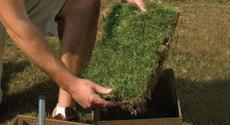


1
1
4
5






Canton has hosted the World’s Largest Flea Market since the 1850s
BY CHET GARNERTHIS DEFINITELY wasn’t the shopping trip I expected, I thought, as I loaded an 8-foot-tall Bigfoot sculpture into the back of my truck. I had just finished securing my new (to me) cowhide, vintage street signs and antique chair. I should have brought more tow straps.
This is the experience of visiting the World’s Largest Flea Market, which happens every month in the town of Canton, midway between Dallas and Tyler. My legs, wallet and stomach were not prepared.
The tradition goes back to the 1850s when the circuit judge would make his monthly trip to town and the locals would congregate around the courthouse. They started bringing items to swap and sell: a gun for a dog or a cantaloupe for a dozen eggs. Soon a tradition was born that now attracts upwards of 150,000 visitors to First Monday Trade Days (which actually happens the weekend before the first Monday of each month).
As soon as I stepped onto the grounds, I realized that this wasn’t a normal swap meet. The official area boasts more than 5,000 vendors across 400 acres. That doesn’t even include the dozens (if not hundreds) of merchants who fill the streets and buildings of the town.
I walked from booth to booth, chatting with junkers and thrifters who had brought their special wares in search of the perfect buyer. While there was more than enough vintage “junk,” I was surprised at the unique artisans selling incredible handcrafted goods—furniture, décor and even metal tools.
Very soon I had worked up an appetite and stuffed my face with some of the best fair food in Texas, including corny dogs and “upside-down” lemonade. Hey, with all the walking I did, I figured I had earned it. And so I ordered an extra piece of peach pie. D
ABOVE The finds for sale at First Monday Trade Days in Canton stretch across 400 acres.
Join Chet as he wades through acres of stuff. Watch the video on our website and see all his Texplorations on The Daytripper on PBS.
Call ahead or check an event’s website for scheduling details, and check our website for many more upcoming events.
Kerrville Totality at the Ridge, (830) 896-0420, shopsattheridge.com
McKinney Total Eclipse of the Heard, (972) 562-5566, heardmuseum.org
12
Poteet [12–14] Strawberry Festival, 1-888-742-8144, strawberryfestival.com
13 Sealy Spring Fest, (832) 492-4244, sealyhistoricalsociety.org
Waxahachie Cowboy Gathering, (469) 309-4040, waxahachiecowboy.com
Chappell Hill [13–14] Bluebonnet Festival, (979) 836-6033, chappellhill historicalsociety.com
Temple [13–14] Texas State Button Society Spring Show and Sale, texasstatebuttonsociety.com
19
20
Granbury [19–20] North Texas Gourd Festival, (903) 258-7410, texasgourdsociety.org
Lakeway [19–21] Art Walk, (512) 261-1010, lakewayartsdistrict.com
Burton Cotton Gin Festival, (979) 289-3378, texascottonginmuseum.org
Channing Panhandle Children’s Foundation Hogs at the Point, (806) 935-5598, talonpoint.org
26
27
Gun Barrel City [26–27] Quilt Show, (903) 391-3241, gunbarrelquiltersguild.org
Hallettsville [26–28] Texas State Championship Fiddlers Frolics, (361) 798-2311, fiddlersfrolics.com
Ingram [26–27, May 2, 4–5, 10–12] The Explorers’ Club, (830) 367-5121, hcaf.com
Castroville Alsatian Festival of Texas, castrovilletx.gov
Corsicana Derrick Days, (903) 654-4850, derrickdays.com
Huntsville Gen. Sam Houston Day, (936) 294-1832, samhoustonmemorial museum.com
Lewisville ColorPalooza, (972) 219-3401, visitlewisville.com
Wimberley Pie Social, info@wimwic.org, wimwic.org
28
Bellville Fruehling Saengerfest, (713) 582-2461, bellvillelions.org MAY 2
New Braunfels Soul Sessions’ Tribute to Tina Turner, (830) 627-0808, brauntex.org
4
Brenham [4–5] Maifest, (979) 337-7580, brenhammaifest.com

The Nature Conservancy is proud to have protected one million acres of land in Texas. This milestone could not have been achieved without the collaborative efforts of landowners, partners and supporters across the Lone Star State. Yet, the urgency to protect and preserve Texas’ treasured landscapes, rivers, wildlife and way of life is greater now than ever. Together, we can find a way to achieve even more.




















DUE APR 10 Textures
DUE MAY 10 Parenthood
DUE JUN 10 Climbing High
Enter online at TexasCoopPower.com/contests.
See Focus on Texas on our website for more Pollinators photos from readers.
All aflutter, we are humming with anticipation. Photos flew in from every corner of the state, and we managed to alight on a few critters that have crawled their way to the top. No sting of disappointment here, just a swarm of entries that leave us buzzing with excitement.
CURATED BY GRACE FULTZ
1 MARK BONAME JACKSON EC
“It is a rare sight to see hummingbirds feeding on sunflowers, but the drought this year in Texas made these little guys feed on whatever they could find.”
2 CINDY VIGIL GVEC
“Gulf fritillary butterflies love this pride of Barbados.”
3 SUSAN KNAPP GIBBONS
UNITED COOPERATIVE SERVICES A feeding butterfly.
4 GAIL EINKAUF SAN BERNARD EC
“Taken at Sweet Berry Farm in Marble Falls.”



Gardening scavengers stoop low to help native species
BY SHERYL SMITH-RODGERS ILLUSTRATION BY CHANELLE NIBBELINKCOME MID-MAY, I turn into a street walker. Not that kind, mind you. Instead, I ply my trade with a green plastic cup and sharp eyes.
“Oh, there you are,” hollers James, my husband, who’s strolling along Greenlawn Parkway. “I figured I’d find you over here!”
My gaze is fastened on clumps of lazy daisies growing along the street. Among the white-petaled blooms with orange centers, I scan for dried seed heads. Now and then, I spot one. Happily, I lean down, pinch it off, then drop the itsybitsy treasure into my cup.
We walk while I scope out wildflowers that grow along a ditch. Patiently, I’m watching for Texas prairie parsleys, winecups and beeblossoms going to seed. I’ll collect some seeds—but not all. I want to admire them again next spring.
I also want to establish them in our yard.
Since 2008, we’ve nurtured Texas native plant gardens at our Blanco home and adjoining meadow, a former vacant lot. Since then, I’ve expanded into rescuing, preserving and protecting overlooked native species that grow in our neighborhood. I collect seeds whenever I can.
Sometimes I dig up and relocate plants, too. For instance, a next-door neighbor several years ago gave me permission to transplant a yellow passionflower, Texas lespedeza and hoary false goldenaster that grew on her side of the fence, where they were often mowed down. Now the trio grows, unrestrained and lush, in our backyard.
I’ve also relocated Indian mallow, Texas snoutbean, scarlet pea, narrowleaf blue-eyed grass and Texas frogfruit to our gardens. Roemer’s mimosa, too. I love to show kids how their tiny leaves fold up when touched. Magic!
Two regular walkers once rang our doorbell. “What’s this?” asked Yalene, while daughter Arden held up a slender branch with yellow flowers. I eyeballed the specimen. Lindheimer’s senna? James and I beelined to the easement where they’d found the plant. It was twoleaf senna, a new-to-me species. A few weeks later, I collected seeds from the site, which has since been cleared. Hopefully the seeds will germinate in our meadow, and the twoleaf senna will live on.
Why go to all that trouble? Because I deeply care about these plants. Because they were here long before us. Because they’re resilient and adapted to our soils and climate. Because they, unlike most ornamental plants, sustain the pollinators and other wildlife that inhabit this place we call home.
From blunt-leaf rabbit-tobacco to zizotes milkweed, we’ve welcomed neighborhood natives into our gardens, where I hope they’ll be appreciated and perpetuated for years to come. So call me a renegade. Or call me a tree hugger. I’ll answer to either one and make no excuses.
I’m a street walker on a mission in a green-light district. D


